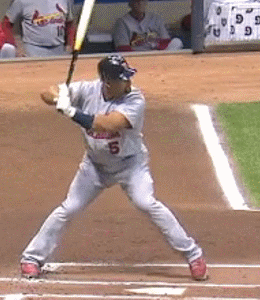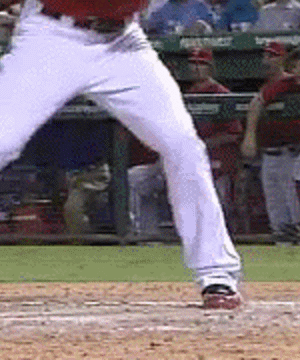
This clip shows Pujols at the moment of transition when his hips go from turning back to turning forward. Prior to the sevam1 video, all I saw when watching clips like this was the back knee turning down-and-in. Most see the knee action and think; "INternal Rotation". The hitting dvds I originally used to teach my dd placed a lot of emphasis on hinging the back knee and driving the back down-and-in into heel plant.
After watching the sevam1 video I stopped looking at the back knee and started looking at the back foot. That's when I realized that the pressure direction at the back foot in hitters like Pujols, Utley. Hamilton. Trout etc., was backwards at the moment of transition, indicating an EXternal Rotation muscle action of the rear leg to drive the hips forward into rotation.
It's impossible to get the back foot action of Pujols, Hamilton, Utley or Trout, by internally rotating your rear leg. As soon as the rear leg begins to internally rotate the pressure at the back foot disappears....squish the bug or having to use too much linear movement after heel plant to unweight the rear foot. The hips will clear in a more anatomically correct way using EXternal Rotation muscle action.
Here is a longer version of sevam1 explaining the back leg. As always, you need to adapt what he's saying to hitting a softball. Think about the first four frames of the Utley clip when watching this video. Do the points about limiting sway back make sense for the softball swing? Does the point about compression make sense for the softball swing (2:48 mark)?








